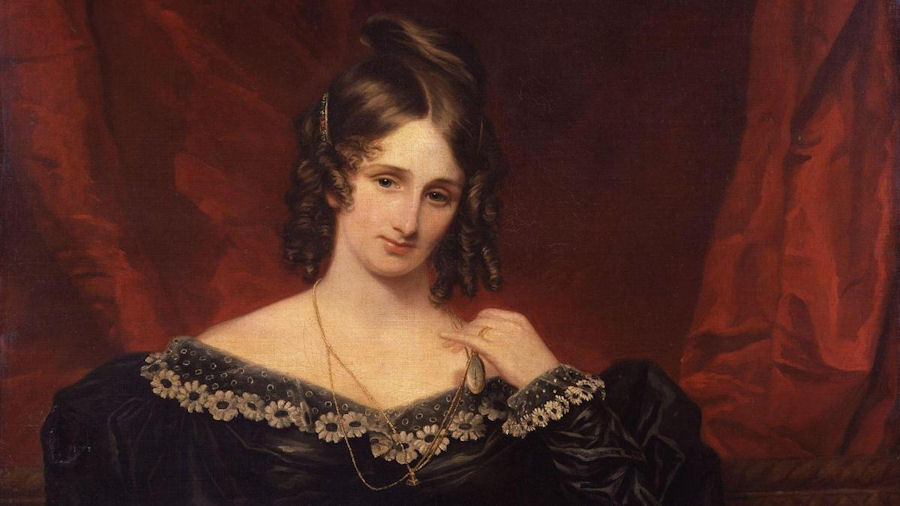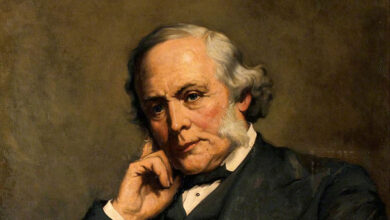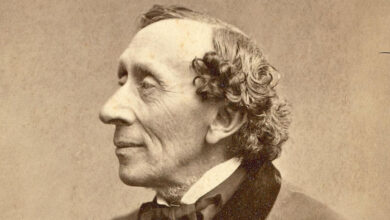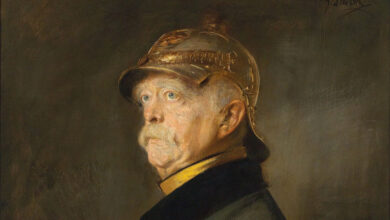
“I do not wish women to have power over men; but over themselves” – Mary Shelley
Podcast: Play in new window | Download
Subscribe: Spotify | Amazon Music | Youtube Music | RSS
Mary Shelley Biography
Mary Shelley was an English author who is primarily remembered for only a single work. Although Frankenstein would become her most popular work, she was a dedicated novelist and wrote many books and stories. Despite personal tragedy, she rose above the loss and controversy in her life to become one of the most well-known and respected female British novelists of all time.
She was born Mary Godwin on 30 August 1797 in London, England. She was the second child of Mary Wollstonecraft who was a well-known writer, philosopher, feminist and educator. Although her mother would die shortly after her birth, Mary knew a lot about her from reading her memoirs.
Mary had no formal schooling, but her father took it upon himself to teach her a wide variety of topics and as he sold books as well as papers and maps from his small, and unprofitable, business, she also had access to a wide array of written knowledge. She also had the significant benefit of a personal governess and a tutor who assisted with her education meaning that she ended up better educated than most women of her day.
Mary met the man who would become her future husband, the poet Percy Bysshe Shelley when she was in her late teens. By 1814 his marriage was already failing and his feelings for Mary had grown significantly as the two shared similar ideas about social reforms and other liberal ideals. Shelley came from a wealthy family and held less-than-respectful views towards money. His family viewed his frivolous spending to be a waste of the family resources, so they limited his access to them.
Mary and Percy began to meet secretly at her mother’s graveside and although Mary was only 17 whilst Percy was 22, and still legally married, the two fell deeply in love. It is said that Mary Shelley lost her virginity to Percy on her mother’s grave. Although her father was firmly against it, the couple eloped and traveled to France.
Percy and Mary lived a life detached from their families as Mary’s father would have nothing to do with her or her illicit affair with the still-married Percy. Percy, meanwhile, was broke and was often dodging creditors while simultaneously trying to encourage a three-way relationship between himself, Mary, and their friend Thomas Jefferson Hogg. In this case, however, Mary’s liberal ideals failed her and although she believed strongly in the concept of free love and was not against the idea on paper, in practice her heart belonged singularly to Percy. However, a friendship did grow between Mary and Thomas, and in 1815 she wrote a letter to him informing him of the death of her premature baby, Clara, and that she wanted to see him. Mary descended into severe depression after this episode and even claimed to have seen and been haunted by visions of her dead child.
In 1816, Mary gave birth to a son, William, and Percy and Mary traveled to Geneva to meet with Lord Byron and the mother of his daughter Claire Clairmont, who was also Mary’s stepsister. While spending time at Lord Byron’s beautiful Geneva villa, the weather became inclement and never really improved, resulting in the group spending a lot of time indoors. They entertained each other by telling stories and eventually Lord Byron challenged everyone to each write their own ghost story. Mary at first had trouble coming up with a concept but as she began to ponder on the ideas of life and death and whether the dead could live again, she had a strong horrific vision of a reassembled corpse coming back to life. The powerful vision kept her from sleeping and she referred to it as a ‘waking dream.’ Mary originally intended Frankenstein to be a short story but with the encouragement of Byron, Shelley, and Claire, she turned it into a full novel and went ahead and had it published in 1818.
Mary Shelley’s life was one of repeated tragedy. She had already suffered the loss of Clara in 1815 and this was followed by the death of her half-sister in 1816. At the end of that year, she and Percy were legally allowed to marry following the death of his wife, but tragedy kept coming. Mary had given birth to another daughter, also called Clara, but she also died less than a year later whilst in Italy with the family. Just nine months after her death, on 7 June 1819, her son William also died. Mary had lost all three of her children and became pregnant with a fourth. Although she was relieved by the successful birth of a son whom she and Percy named Percy Florence, the reprieve was again short-lived.
On 8 July 1822, Percy Shelley died whilst on the way back from Livorno. A combination of poor sailing skills and a severe storm, sank his boat, the Don Juan, in the Gulf of Spezia.
Mary was racked with grief and returned with her only son back to England. Her life continued to be distraught and unhappy, and she found herself the target of blackmailers. She was also in a state of declining health from 1839 onwards suffering from debilitating headaches along with occasional paralysis of different parts of her body. She eventually succumbed to a suspected brain tumour on 1 February 1851 at the age of 53.
Podcast: Play in new window | Download
Subscribe: Spotify | Amazon Music | Youtube Music | RSS




